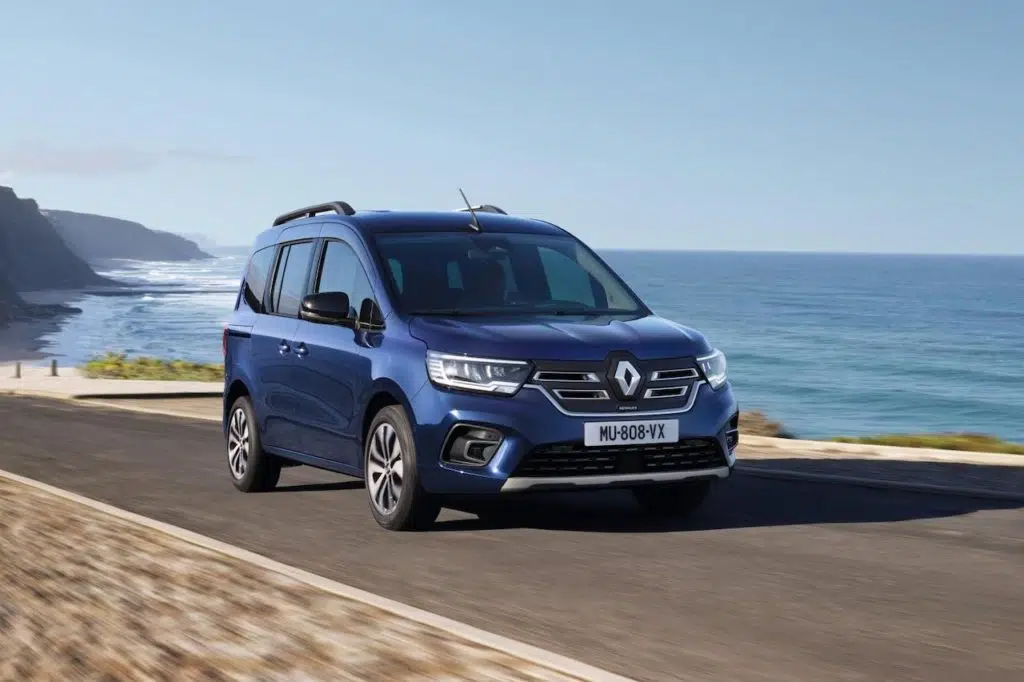Renault To Introduce Kangoo E-Tech Electric
With the new Kangoo E-Tech Electric, Renault is presenting the five-seater Kombivan for the first time in an all-electric version at the Paris Motor Show.
A 90 kW / 122 hp electric motor with 245 Nm of torque is installed, and the 45 kWh battery enables a range of up to 285 kilometres in the WLTP test cycle.
Renault presented the first Kangoo 25 years ago. Since then, the French manufacturer has sold more than four million units of the estate car and its commercial vehicle variant Kangoo Rapid in more than 50 countries around the world. With its unusual appearance, its large amount of space in a minor traffic area and its interior variability, the Kangoo set trends in its class right from the start. As a novelty, the model established the side sliding door for the rear in the segment of estate cars. With the Kangoo E-Tech Electric, Renault is now presenting an all-electric version of the bestseller for the first time.
The new Kangoo E-Tech Electric includes all the practical advantages and safety and comfort features of the combustion engine version. These include a second row of seats with three full-sized seats that can comfortably accommodate three adults; a boot capacity of 850 litres and the option to expand this to up to 2500 litres using the longitudinally sliding rear bench and folding the second row of seats (exclusive to the Kangoo E-Tech Electric); a new type of roof rail that can be converted into a roof rack in a few simple steps without the need for tools; a total of 14 driver assistance systems for increased safety, including autonomous driving at level two ("semi-automated driving").
Visually, the Kangoo E-Tech Electric is distinguished from its combustion engine counterpart by its radiator grille. The charging port is hidden there behind the Renault emblem.
The lithium-ion battery with a capacity of 45 kWh consists of eight modules that can be repaired individually. The power storage allows up to 285 kilometres of range in the WLTP test cycle, which is sufficient for daily mobility needs. By using the ECO mode, which limits the vehicle's top speed and power, it should be possible to further extend the range, the manufacturer said in a statement. Renault guarantees the battery for eight years or 160,000 kilometres. If its capacity falls below 70 per cent of the rated capacity (SoH), Renault will replace it free of charge.
Also contributing to the efficiency of the Kangoo E-Tech Electric is the recuperative braking strategy. The driver can choose between three levels of recuperation at the selector lever:
- Moderate recuperative braking: limited recuperation, for driving on motorways and dual carriageways.
- moderate recuperative braking: standard recuperation, for use in a wide range of situations. When the accelerator is released, the effect is the same as that of a vehicle with an internal combustion engine.
- Maximum recuperative braking: maximum recuperation for use in city traffic, traffic jams or on mountain roads.
- With maximum recuperation, the electric van can be accelerated and braked almost exclusively via the accelerator pedal. Even on downhill stretches, the vehicle can decelerate by simply releasing the accelerator pedal without having to use the brake pedal. Depending on the degree of deceleration, the system activates the brake lights so that following road users can react in time.
